I have a dataset (csv) with the format shown bellow:
First column: random integers
Second column: The class of each integer (called bins)
Bins have been made after preprocessing,for exampe integers between 1000 and 1005 belong in bin number 0 , 1006 and 1011 beongs in bin number 1 and go on.
Target column for my neural network is the column of bins (second column).
I use OneHotEncoding for my target column and transform every bin number to a binary vector. I have 3557 different bins (classes).
I trained it and evaluate it with accurancy 99,7% as a result.
import numpy as np
import pandas as pd
import tensorflow as tf
from sklearn.preprocessing import OneHotEncoder
from keras import Sequential
from keras.layers import Dense
from sklearn.model_selection import train_test_split
df = pd.read_csv("/dbfs/FileStore/tables/export78.csv")
onehotencoder = OneHotEncoder(categorical_features = [1])
data2 = onehotencoder.fit_transform(df).toarray()
dataset = pd.DataFrame(data2)
X= dataset.iloc[:,3557].astype(float)
y= dataset.iloc[:,0:3557].astype(int)
X_train, X_test, y_train, y_test = train_test_split(X, y, test_size=0.2)
classifier = Sequential()
#First Hidden Layer
classifier.add(Dense(3557, activation='sigmoid', kernel_initializer='random_normal', input_dim=1))
#Second Hidden Layer
classifier.add(Dense(3557, activation='sigmoid', kernel_initializer='random_normal'))
#Output Layer
classifier.add(Dense(3557, activation='sigmoid', kernel_initializer='random_normal'))
#Compiling the neural network
classifier.compile(optimizer ='adam',loss='binary_crossentropy', metrics=['accuracy'])
#Fitting the data to the training dataset
classifier.fit(X_train,y_train, batch_size=50, epochs=10)
accr = classifier.evaluate(X_test, y_test)
print('Test set\n Loss: {:0.3f}\n Accuracy: {:0.3f}'.format(accr[0] ,accr[1]))
classifier.save("model.h67")
data1 = np.array(X_test)
List = [data1]
model = tf.keras.models.load_model("model.h67")
prediction = model.predict([(data1)])
target = (np.argmax(prediction, axis=0))
dataset1 = pd.DataFrame(target)
display(dataset1)
THE PROBLEM:
When I try to predict manually using my model I cant take right results.
As prediction input a give a csv with only one column with random integers and I want bins that belong as a result.

